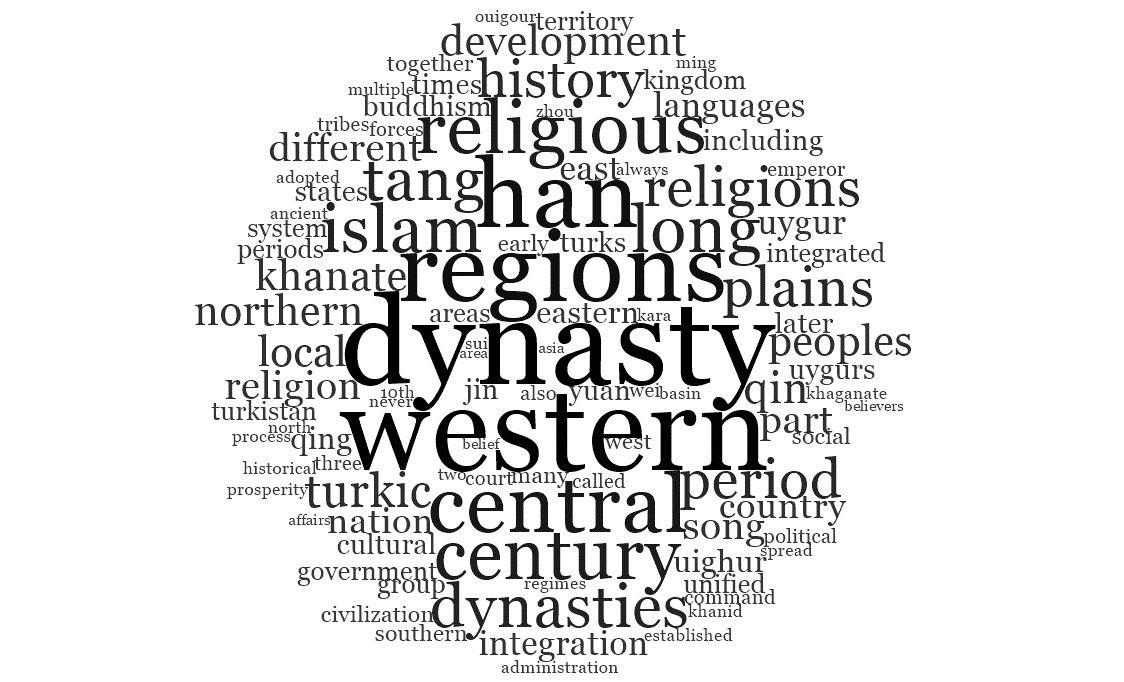Original document link: Click Here
Overview
The paper begins by emphasizing the inseparability Xinjiang from Chinese territory. It highlights the multiethnic nature of Xinjiang and emphasizes that “Islam is neither an indigenous nor the sole belief system of the Uyghur people. It has taken root in the Chinese culture and developed soundly in China.”
The paper further elaborates on the historical linkage between different Chinese Dynasties and Western regions. In a section titled “Xinjiang Has Never Been “East Turkistan” the paper stresses that “Never in Chinese history has Xinjiang been referred to as “East Turkistan”, and there has never been any state known as “East Turkistan” … The advocacy of this so-called state has become a political tool and program for separatists and anti-China forces attempting to split China.”
The subsequent section goes on to highlight the multi-ethnic nature of China and Xinjiang.
The paper then gives a historical overview of the Uyghur Ethnic group. It emphasizes that the Uyghurs are not descendants of the Turks.
“Since the modern times, some Pan-Turkism advocates with ulterior motives have described all peoples of the Turkic language family as “the Turks” using the untenable argument that the Turkic-speaking tribe integrated with the ancestors of the Turkish people after migrating westward. A language family and an ethnic group are two essentially different concepts. In China, ethnic groups speaking Turkic languages include the Uyghurs, Kazaks, Kirgiz, Uzbeks, Tatars, Yugurs, and Salars, each with its own history and unique culture. These peoples cannot be referred to as “Turks”.”
It emphasizes the historical ethnic diversity in the region, the following excerpt from the text serves as a good example; “…before Islamic culture spread into Xinjiang, all ethnic cultures in the region, including the Uyghur culture, had prospered in the fertile soil of China’s civilization. It was not until the turn of the 9th and 10th centuries, when Islam spread into the region, that the Islamic culture of the Arab civilization – which dates back to the 7th century – began to exert an influence on ethnic cultures in Xinjiang.”
The paper then emphasizes a lack of willing acceptance of Islam in the region, “rather there was forced acceptance through cultural conflict and religious wars”. According to the paper, this resulted in serious damage to the culture and arts of various ethnic groups in Xinjiang. “As to the incoming Islamic culture, the ethnic cultures in Xinjiang both resisted and assimilated it in a selective manner, and adapted it to China’s realities”.
This section concludes by highlighting the need for a stronger sense of identity with Chinese culture for the prosperity of ethnic cultures in Xinjiang.
The next section elaborates on the historical co-existence of multiple religions in Xinjiang as a set-up to the proceeding section which focuses entirely on explaining how Islam is not indigenous nor the sole belief system of the Uyghurs.
“The Uighur conversion to Islam was not a voluntary choice made by the common people, but a result of religious wars and imposition by the ruling class, though this fact does not undermine our respect for the Muslims’ right to their beliefs. Islam is neither an indigenous nor the sole belief system of the Uyghur people.”
This section elaborates on the evolution of Islam within the Chinese cultural context and highlights its distinct ethnic features.
“For example, orthodox Islam does not allow the worship of anyone or anything other than Allah. However, the Uyghurs and some other ethnic groups still venerate mazars, which are mausoleums or shrines, typically of saints or notable religious leaders. Mazar worship is a prominent example of the localization of Islam in Xinjiang.”
The paper also touches upon the rise of religious extremism in Xinjiang since the end of the Cold War.
“Under the guise of religion, religious extremism trumpets theocracy … It instigates terror and violence and incites hostility between different ethnic groups, running counter to the teachings concerning patriotism, peace, solidarity, the golden mean, tolerance, and good works advocated by Islam and many other religions.”
The paper concludes by emphasizing the resolute action taken against terrorism and violence to maintain social harmony and promote development in the region under the leadership of the Central Committee of the Communist Party of China with Xi Jinping as the core. It rejects all criticism of the Chinese government’s efforts in this regard.
| Word | Count |
|---|---|
| rights | 45 |
| urban | 38 |
| religious | 34 |
| rural | 34 |
| development | 29 |
| right | 29 |
| public | 28 |
| system | 28 |
| million | 26 |
| protection | 26 |
| social | 26 |
| basic | 23 |
| cultural | 23 |
| education | 21 |
| uygur | 21 |
Word cloud:
(Minimum 5 letters)
